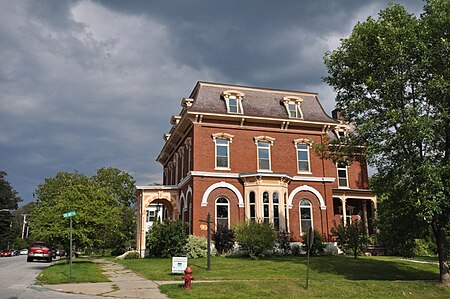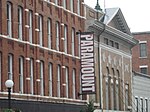Rutland Courthouse Historic District
Courthouses on the National Register of Historic Places in VermontHistoric districts in Rutland County, VermontHistoric districts on the National Register of Historic Places in VermontNRHP infobox with nocatNational Register of Historic Places in Rutland County, Vermont ... and 3 more
Rutland (city), VermontUse mdy dates from August 2023Victorian architecture in Vermont

The Rutland Courthouse Historic District encompasses an architecturally cohesive area of civic and residential buildings in Rutland, Vermont. Roughly bounded by Court, Washington, South Main, and West Streets, the district was principally developed between 1850 and 1875, and includes a number of prominent municipal and county buildings, including the Rutland County courthouse, the Rutland Free Library, and the Grace Congregational United Church. The district was listed on the National Register of Historic Places in 1976.
Excerpt from the Wikipedia article Rutland Courthouse Historic District (License: CC BY-SA 3.0, Authors, Images).Rutland Courthouse Historic District
Center Street, Rutland City
Geographical coordinates (GPS) Address Nearby Places Show on map
Geographical coordinates (GPS)
| Latitude | Longitude |
|---|---|
| N 43.606944444444 ° | E -72.974722222222 ° |
Address
Center Street 138
05701 Rutland City
Vermont, United States
Open on Google Maps






